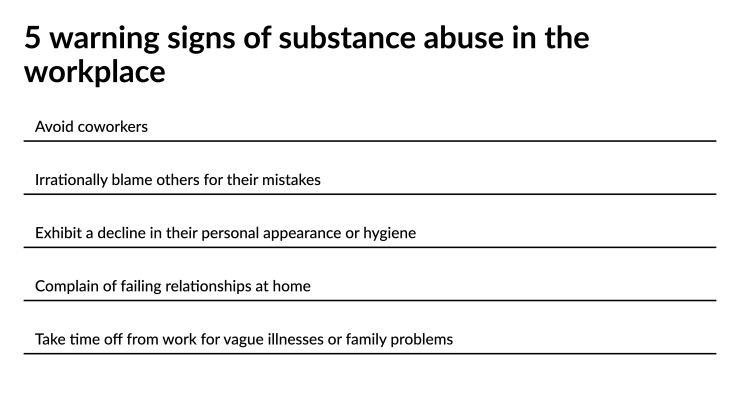Substance abuse and addiction continue to take a toll on workplaces across the U.S., with nearly
According to the National Clearinghouse for Alcohol and Drug Information (NCADI), employees who misuse drugs and alcohol are more likely to injure themselves or someone else, relative to those without current or past substance use. This claim is substantiated by the U.S. Department of Labor, which reports that drug and alcohol abuse in the workplace is responsible for
Read more:
Fueling the flames of workplace addiction over the past year is the accelerated use of drugs and alcohol resulting from the coronavirus pandemic, which must be ameliorated through employer assistance and support or else the addiction trends exacerbated by COVID-19 are likely to continue for many years to come.
There are steps employers can take now to
Employer mitigation strategies for workplace addiction
Improving workplace safety should start with the development of a
- Proactively preventing substance misuse
- Reducing the stigma of addiction
- Encouraging treatment and sustained recovery. This includes mitigating stress and building resilience so that people can adapt and grow from challenging experiences.
There are several components of a workplace-supported recovery program:
Prevent work-related injuries and illnesses by training managers: Managers should be trained to spot the
- Avoid co-workers
- Irrationally blame others for their mistakes
- Exhibit a decline in their personal appearance or hygiene
- Complain of failing relationships at home
- Take time off from work for vague illnesses or family problems
Provide information and access to the right care: Research has shown that combining addiction treatment with therapy ensures the best chance of success for most patients with substance use disorders. The most effective of these therapies include:
- Medication-Assisted Treatment (MAT): Medication-Assisted Treatment provides a “whole patient” approach to treat substance use disorders. It combines the use of FDA-approved medications with counseling and behavioral therapies.
MAT programs are clinically driven and tailored to meet the needs of each patient. While a combination of medication and therapy can successfully treat substance use disorders, for some, MAT can also help sustain recovery.
- Cognitive Behavioral Therapy (CBT): Cognitive Behavioral Therapy helps those battling addiction address problematic thoughts and feelings. Widely-used in addiction treatment today,
CBT teaches recovering addicts how to find connections between their thoughts, feelings and actions, and helps increase awareness of the things that impact recovery.
- Digital Solutions: Considering that employees today operate out of multiple locations across the country and the globe – including a significant number of remote workers – comprehensive solutions that employ both MAT and CBT can be delivered digitally to best serve the modern distributed workforce. The
ideal digital solution is one that combines technology, healthcare and design, and provides programs that are tailored to the individual employee’s specific needs.
- Peer Support: Peer support and coaching bolster the social supports available to workers in recovery and are often elements of comprehensive recovery programs for substance use disorders, along with Medication-Assisted Therapy and Cognitive Behavioral Therapy.
Accommodate recovery: In the context of addiction, employers must consider relaxing zero-tolerance drug policies and focus instead on recognizing addiction as the chronic disease it is. Providing workplace accommodations and other return-to-work assistance by allowing modified work schedules and leaves of absence for rehabilitation, and to attend support group meetings, demonstrates an openness to second-chance employment and aids in the destigmatization of addiction.
Read more:
Ignoring the problem can create ripple effects that result in serious long-term economic and employee wellness issues, regardless of a company’s size. However, guiding employees toward treatment is a proactive, compassionate and ultimately, cost-effective course of action that instills in them the sense that they are a valued part of the organization. And, an employee who believes their job is secure may be more inclined to seek treatment and get their life together.






